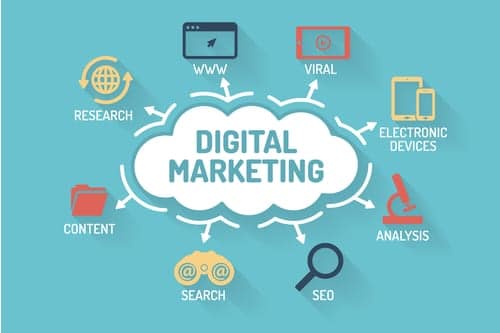Other businesses want to build an incredible website to benefit from online opportunities. However, many of these businesses hire unqualified developers or, even worse, a friend or neighbor who claims to have the skills and the specialization to design a high-performing web site. The owner spends time and money launching what they believe to be an attractive website, but the bounce rate is high, the conversion rate is low, and traffic and leads are flat or dropping over time. The truth is that my company and I have redesigned MANY of these sites.
Avoid These 4 Mistakes During Designing a Website
Based on my years of experience as a web developer in Charleston, I’ve identified the top 4 reasons why so many web site designs fail. Here are the mistakes to avoid:
1. The Web Site Is Too Complex
Perhaps one of the main reasons web site designs fail is because they are too complex. In my experience, site visitors favor a simple site over a complex one. I base my observation on years of reviewing analytics that reflects the impact design has on user behavior for the numerous web sites that I’ve developed.
Fools ignore complexity. Geniuses remove it. ~ Unknown
Don’t take my word for it! In 2012, Google and the University of Basel, Department of Psychology in Switzerland conducted a study entitled “The Role of Visual Complexity and Prototypicality Regarding First Impression of Websites: Working Towards Understanding Aesthetic Judgments.” Although the title of the study is a mouth-full, the take-away is simple – users consistently rated “visually complex” websites as less beautiful than their simpler counterparts. Stated another way, the study found that the simpler the design, the better.
2. The Web Site Is Too Generic
Many websites strive to communicate value but fail to engage visitors and drive digital marketing results. This happens because the site has nothing unique to offer and it is too generic. If visitors don’t feel like the site represents what they’re looking for, then they’ll hit the back button and “bounce.”
There are painters who transform the sun to a yellow spot, but there are others who with the help of their art and their intelligence, transform a yellow spot into the sun. ~ Pablo Picasso
One primary reason why some sites are too generic is that they overuse stock photography. On the one hand, using stock photography is easier and cheaper than using custom photographs. On the other hand, the overuse of stock photography can make a site look too much like every other site on the web. When I design a web site, I encourage customers to use custom photography as much as possible to build a beautiful web design that wins trust.
3. The Web Site is Egocentric
Nobody likes a narcissist. Unfortunately, many websites focus on conveying how awesome the company is. Frankly, site visitors don’t care.
I don’t care what you think unless it is about me. ~ Kurt Cobain
When potential customers land on a commercial site, they are hoping to solve a problem, answer a question, or buy something. They aren’t there to hear you talk about how great the company is or how many awards the business has. If the site doesn’t provide a solution to what the visitor wants, the site will fail.
4. The Web Site Isn’t Mobile-Friendly
Apparently some designers haven’t received the message – web sites must be mobile-friendly! For the web sites we manage, we see that over 50% of the traffic is mobile, and those numbers continue to grow.
If your plans don’t include mobile, your plans are not finished. ~ Wendy Clark, Coca-Cola
Small type, tiny menus, pinch-to-zoom, and layers of pages and links make for horrible user experience on a mobile device. As a stop-gap measure, some web sites offer a “mobile” site, with limited functionality, with a link to visit the “full site.” As I wrote in an article about why you need a responsive web site design, this doesn’t make for the best user experience either. Forget “mobile” sites. Move to “responsive” sites. Responsive websites automatically know what device they are being viewed on and adjust their layout accordingly. The bottom line is that if a site isn’t mobile-friendly, then it will lose a significant portion of visitors who will bounce off to the next site.










